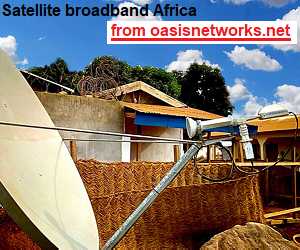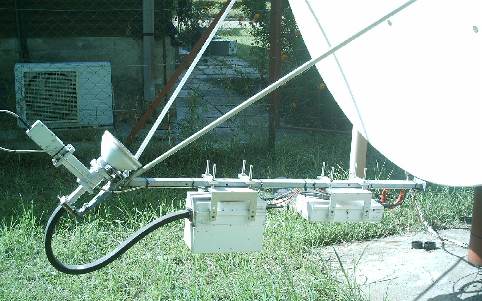| Home Login Register |
| Satellite Internet forum › Satellite Connection in Africa › Problem with iDirect 5000 modem |
|
Pages: 1
|
Problem with iDirect 5000 modem(Read 6017 times) |
|
mcheshi
Member
★★ Offline Posts: 6 |
Jun 20th, 2008 at 10:49am
|
| Back to top |
IP Logged
|
|
Eric Johnston
YaBB Moderator
★★★★★ Offline Posts: 2109 |
Reply #1 - Jun 20th, 2008 at 12:37pm
|
| Back to top |
« Last Edit: Jun 23rd, 2008 at 3:40pm by Admin1 »
IP Logged
|
|
mcheshi
Member
★★ Offline Posts: 6 |
Reply #2 - Jun 20th, 2008 at 12:47pm
|
| Back to top |
IP Logged
|
|
Eric Johnston
YaBB Moderator
★★★★★ Offline Posts: 2109 |
Reply #3 - Jun 20th, 2008 at 12:53pm
|
| Back to top |
IP Logged
|
|
mcheshi
Member
★★ Offline Posts: 6 |
Reply #4 - Jun 20th, 2008 at 12:56pm
|
| Back to top |
IP Logged
|
|
Eric Johnston
YaBB Moderator
★★★★★ Offline Posts: 2109 |
Reply #5 - Jun 20th, 2008 at 1:03pm
|
| Back to top |
« Last Edit: Jun 20th, 2008 at 2:57pm by Eric Johnston »
IP Logged
|
|
dot
Senior Member
★★★ Offline Posts: 118 |
Reply #6 - Jun 21st, 2008 at 12:18pm
|
| Back to top |
IP Logged
|
|
mcheshi
Member
★★ Offline Posts: 6 |
Reply #7 - Jun 23rd, 2008 at 3:18pm
|
| Back to top |
IP Logged
|
|
Admin1
YaBB Admin
★★★★★ Offline Posts: 1215 |
Reply #8 - Jun 23rd, 2008 at 3:49pm
|
| Back to top |
IP Logged
|
|
Ex Member
Ex Member
|
Reply #9 - Jun 25th, 2008 at 5:08pm
|
| Back to top |
IP Logged
|
|
Pages: 1
|
Email me: eric@satsig.net
Powered by YaBB 2.5.2!
YaBB Forum Software © 2000-. All Rights Reserved.
Disclaimer, Terms of Use and Privacy Forum User Agreement Forum rules Cookie policy.



